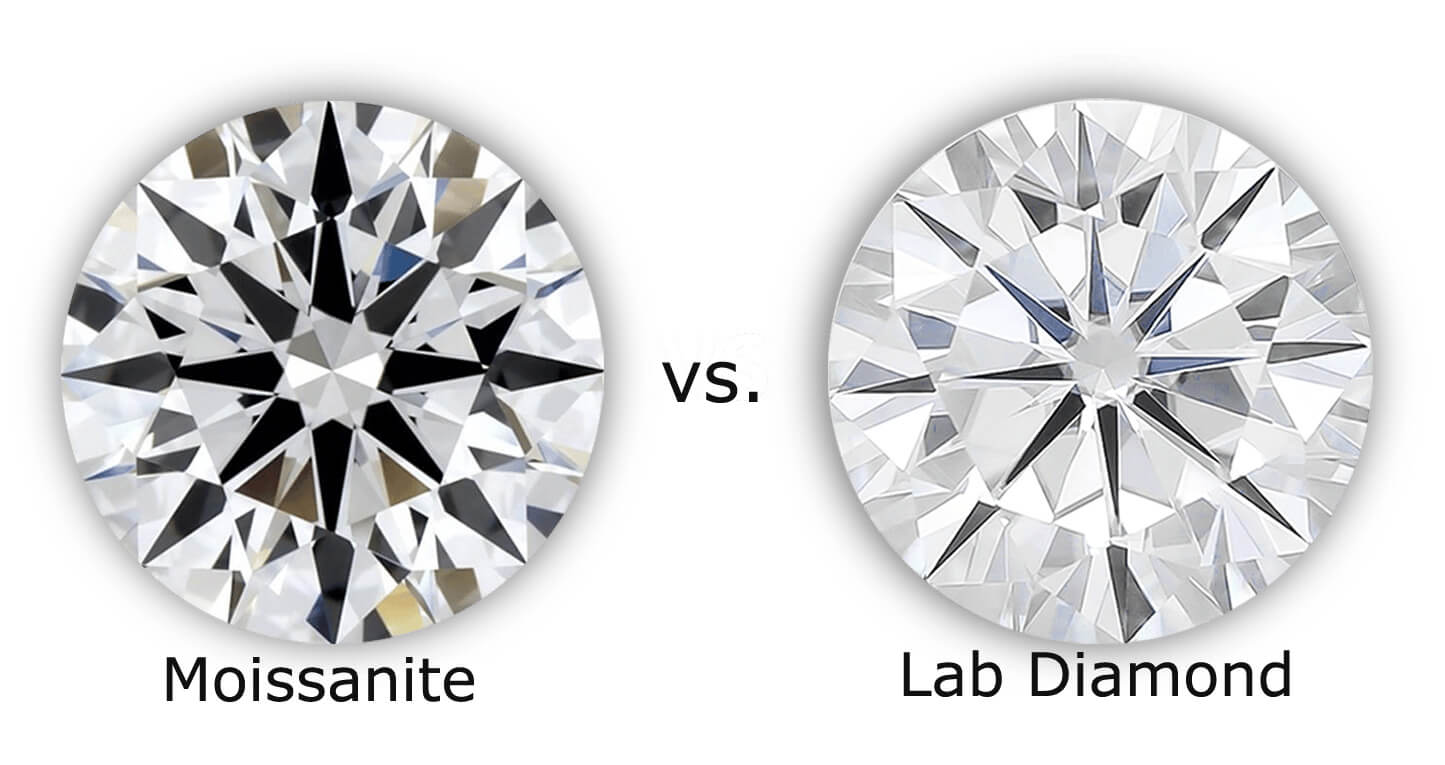Introduction
When it comes to buying a diamond, you want to make sure you get the best possible quality and value for your money. But with so many options available, it can be hard to know where to start. This article will help you compare two of the most popular diamond alternatives: Moissanite and Lab Diamonds.
Moissanite
Moissanite is a synthetic gemstone created in a laboratory that closely resembles diamonds. It was first discovered in 1893 by Nobel Prize-winning chemist Dr. Henri Moissan, who found tiny crystal fragments in a meteorite. Today, Moissanite is made by a process known as chemical vapor deposition (CVD), which creates high-quality crystals that are virtually identical to those found in nature.
Pros:
- Affordable: Moissanite is significantly less expensive than diamonds, making it an excellent option for those on a tight budget.
- Durable: Moissanite is very durable and can withstand a lot of wear and tear. It has a hardness of 9.25 on the Mohs scale, which is just below the hardness of a diamond (10).
- Versatile: Moissanite comes in a variety of colors and sizes, making it a versatile option for all types of jewelry.
Cons:
- Not as valuable: Because Moissanite is a synthetic gemstone, it is not as valuable as a natural diamond. This can be an issue if you’re looking for an investment piece or want to pass your jewelry down as a family heirloom.
- Color: Although Moissanite is available in different colors, some people find that it has a slight yellow or green tint that is noticeable in certain lighting conditions.
Lab Grown Diamonds
Lab diamonds are synthetic diamonds that are created in a laboratory using advanced technology. The process of making lab diamonds is similar to the natural process that creates diamonds, except it is done in a controlled environment. Lab diamonds are virtually identical to natural diamonds in terms of their physical and optical properties, making them nearly indistinguishable from the real thing.
Pros:
- Identical to natural diamonds: Lab diamonds are virtually identical to natural diamonds, which means they have the same physical and optical properties as a natural diamond. This makes them a great alternative to natural diamonds if you’re looking for a similar look and feel.
- More environmentally friendly: Because lab diamonds are created in a laboratory, they don’t require the same kind of destructive mining practices that are used to extract natural diamonds. This makes them a more environmentally friendly option.
- Consistent quality: Because lab diamonds are created in a controlled environment, their quality is more consistent than that of natural diamonds. This makes it easier to find a high-quality lab diamond that meets your specific needs.
Cons:
- Not as valuable: Like Moissanite, lab diamonds are not as valuable as natural diamonds because they are synthetic. This means that if you’re looking for an investment piece or want to pass your jewelry down as a family heirloom, lab diamonds may not be the best option.
- Limited availability: Although lab diamonds have become more widely available in recent years, they are still not as easily accessible as natural diamonds. This can make it harder to find the right lab diamond for your needs.
Conclusion
When it comes to choosing between Moissanite and Lab Diamonds, there are pros and cons to consider. Moissanite is a more affordable option that is also very durable, but it is not as valuable as a natural diamond. Lab diamonds are virtually identical to natural diamonds, but they are not as valuable either. Ultimately, the choice between Moissanite and Lab Diamonds comes down to the individual’s personal preferences, budget and needs.


